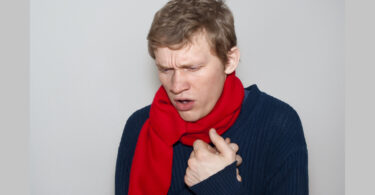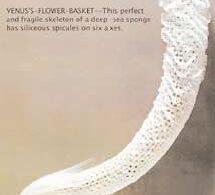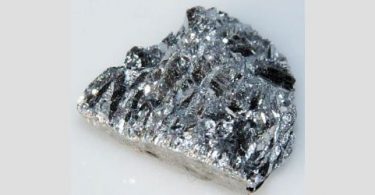Excerpted from their book: Absolute Homeopathic Materia Medica
Fowler’s Solution Kali-ar.
REGION
Skin
Mucous membranes
Blood
Cardiovascular system
Nerves. Solar plexus
Kidneys
Every tissue generally
WORSE
COLD: Air, drafts, becoming, feet getting. Uncovering
Change of temperature or weather
Warmth (itching). Becoming heated
Every other day, morning: 1-3 a.m. (Ars.); 2-3 a.m.
Touch. Noise. Eating
Milk. Ice-cream. Quinine
Walking (fast). Motion Exertion. Ascending
Suppressed sweat, eruptions
BETTER
Warmth
Rainy days
Eructations
Rest
MONOGRAM
| SKINY. CHILLY. EXUDATIVE. NEUROTIC. CALCAREOUS. CANCEROUS. CACHECTIC. PSORO-SYPHILITIC. |
- Highlights: A very deep and long-acting medicine. Complaints associated with eruptions of long before, or at present. Tendency towards malignancy. Takes cold easily, from drafts, from being heated and then chilled. Inveterate skin diseases.
- Make-up: Chilly, nervous, restless, anemic. Puffy under the eyes. Pale, waxy, clammy. Emaciated, old-looking. Lack of vital heat, a constitutional coldness with aversion to and < from everything cold. Wants very warm clothing and warm room even in Summer (Psor.). Averse to open air. Coldness of many parts. Gouty. Neurotic.
Nerves:
- Tremors; from loud noise or ‘sudden unexpected motion.’ Numbness in limbs. Tingling in limbs.
- Weakness, as in patients heading towards phthisis, Bright’s disease (or gout); unwilling to move (opp. Ars.). Sensitive to touch, to noise, esp. voice. Convulsions, with consciousness, clonic. Epilepsy (all KALIs). Hysterio-epilepsy. Paralysis.
Tissues:
- Rheumatic, gouty and syphilitic pains; < at change of weather. Pains burning, stitching. “Itching, jerking, twitching, burning, nausea and constriction.” Pulsation all over body. Gouty nodosities; < change of weather. Fissures about flexures of joints.
- Mucous membranes: Catarrhal inflammation and ulceration.
- Blood: Anemia. Chlorosis. Pale and waxy complexion, with sweat. Veins of legs varicose.
- Dropsies: Edema of chronic nephritis or myocardial weakness (Ars.); under eyelids, of face, of limbs (with rheumatic stiffness).
- Discharges: Bloody, yellow, offensive.
- Muscles flabby. Glands atrophy. Bones and other tissues necrosed. Inflammation in many organs and glands; esp. stomach, liver, kidneys. Fatty degenerations (all KALIS).
- Growths: Small nodules under skin. Warts grow rapidly. New growths; lupus; epithelioma; cancerous ulceration; skin cancer, where suddenly an alarming malignancy sets in without any external signs. Presents a good picture of malignancy coupled with a history of eruptions. Parakeratosis (horniation) of corns, warts.
Comments:
- An minus its temperament (fastidious, austere, miser, greedy), and plus calcareous (gout) and other Kali features (like rheumatism), and a prominent skin phase.
Mind:
- Conscientious; emphasis on morality. Nervous, anxious and restless, contentious, curt, jealous, oversensitive etc, like
- Neuropathia: Nervous tremors from a loud noise or a sudden motion; globus hystericus.
- Apprehension in pit of stomach from emotions.
PARTICULARS
Head:
- Headaches: Gastric, catarrhal; chronic periodic sick headaches, after suppressed eruptions or malaria; toxic, uremic. Worse: uncovering head, cold (opp. Ars.), sleep, lying down, eating. Better: hot drinks, warm wrapping, heat. Hot head, cold limbs.
- Eyes:
- Brilliant, glassy, fishy, protruding. Veins injected, eyeballs fixed, with dyspnea. Cornea: spots on; ulceration. Lids: lower swollen (upper Kali-c.).
Ears:
- Pain < evening and night, cold air, > heat. Tinnitus and deafness; after quinine.
Nose:
- Chronic catarrh; since childhood. Discharge offensive, acrid, bloody, yellow-green, burning. Sneezing frequent and violent.
Face:
- Expression: anxious, frightened, startled, staring. Looks sickly, haggard, pinched, sunken and oldish; pale and waxy; muddy. Periodical pain (neuralgic or rheumatic).
- Acne, pustular, < during menses. Boils. Rash. Nodular eruptions. Epithelioma.
Mouth:
- Vesicles. Ulcers. Toothache < eating, menses, cold. Tongue: inflammation, swelling (or feels swollen); burning; dry; clean red like raw beef, coated on edges only; cancer. Taste abnormal. Dry. Salivation.
Throat:
- Choking, with saliva. Globus, > eructations. Dry and sore; burning; torn as if; ulcerated.
Stomach:
- Desires: Sour, sweet, warm things. Averse to food, meat.
- Worse after: Fats, cold food and drinks, milk, ice-cream (when overheated).
- An anxious, or empty sinking sensation (when faintness) from pit of stomach to spine, with palpitation. Obstinate forms of gastritis, acute or chronic.
- Intense nausea with most complaints, during pregnancy, < cold things.
Abdomen:
- Enteritis and ulceration. Peritonitis. Tympanitic distension. Dropsy.
- Liver painful; jaundice; gall-stone colic. Catarrh of colon (mucous colitis).
Rectum:
- Burning; with piles, < walking. Diarrhea < night, after midnight, milk, cold drinks. Constipation.
Urinary:
- Nephritis (all KALIS), cutting and stitching pains, edema; Addison’s disease. Bladder: catarrhal inflammation. Incontinence. Not finished sensation.
Male:
- Testes hard, painful, swollen. Erections feeble. Seminal emissions.
Female:
- Burning. Leucorrhea offensive, acrid, burning.
- Menses: Acrid, offensive, scanty; absent or suppressed.
- Cauliflower excrescences, with flying pains, pressure below os pubis and stinking discharge. Cancer of uterus (palliative).
- Mammae: Milk suppressed.
Respiratory:
- After suppressed eruptions: Hoarseness, aphonia. Asthma, < every other day, 2-3 a.m., touch, noise.
- Cough: Wet in morning, dry at night; choking, asthmatic cough, in cold, anemic subjects; with fever; gastric; spasmodic; < 2-3 a.m., cold.
- Expectoration: Muco-purulent with specks of blood.
- Tropical eosinophilia, fever from 4 p.m. lasting all night, cough worse during fever, after eating and again 2-4 a.m.; patient has black otorrhea (is warm blooded), allergic to dust, thirstless; > in wet weather.
- Chest: Constriction. Oppression. Inflammation of lungs; pleura (with effusion). Threatened phthisis, patient with unmanageable chilliness.
Heart:
- Pericarditis. Anxious and violent palpitation; with nephritis, with anxiety in stomach. Cardiac and anemic murmurs. Myocardial weakness; dropsy.
- Pulse: Weak, small, imperceptible; contracted; rapid.
Back:
- Cold and sensitive to cold air. Stiffness. Much pain and tenderness down spine. Spinal irritation.
Locomotor:
- Rheumatic and neuralgic pains in limbs; during chill, in cold air, > heat. Limbs numb and tingle. Aching in (right) shoulder and elbow joints followed by herpetic eruption. Skin of arms thickens and roughens (of soles, Ars.). Gouty nodosities.
- Sciatica, extending downwards. Muscular contraction of knees. Crampy feeling in legs, with partial loss of motion and sensation, livid in places, tending to slough.
Sleep:
- Restless, disturbed, by horrid dreams. Late falling to. Yawning. Sleeps with one hand over the heart region.
Skin:
- Most troubles have a skin phase or base. Neuro-skins. Allergic skins. Dry, wilted (dull), wrinkled, inelastic; muddy, cicatrices (of eczema) remain dark-colored.
- Chronic dry eczema, scales (larger than of ), intense itching < night, warmth (of bed), walking, undressing, on uncovered parts.
- Herpes: Papules, then vesicles, then pustules which dry up into scabs. Herpes zoster esp. right. Psoriasis. Rash. Lichen confluens. Intertrigo. Boils; to remove the tendency. Exanthemata. Erysipelas. Lepra. Epithelial cancer.
- Phagadenic ulcers, with deep base and turned up edges, ichorous, black, offensive discharge.
Thermic:
- Chill and coldness dominate; even during fever. Internal heat with external chill or coldness. Temperature intense or subnormal.
- Sweat profuse, cold, offensive, from weakness, slight exertion like eating; with chill; in chronic cases. But otherwise absent.
- Chronic intermittent fever; after abuse of quinine. Febrile complaints after suppression of sweat from entering a cold damp room or cellar. Hectic fever.
- Scarlatina: Brain and kidney affected; coma alternating with delirium; subsultus (twitching); renal elements (casts) in urine, edema pulmonum with uremic symptoms (cp. Ter.).
Relations:
- Kali-ar. may be a member of the radioactive group (Calc-f., Phos., Plb., Stront-c. ).
- Compare: , Carc., Chin., Kali-sil., Psor., Rad-met., Rumx., X -ray.
- Antidote: Kali-i. (to overdosing).
- Complementary: Nat-m.
- Collateral: , Ars-i., Hep., Kali-bi., Sil., Syph., Thuj.





Dear Dr. Kulkarni,
Your materia medica is very inclusive and thorough. I often find items not mentioned in my current M.M.’s It’s a real education! Thank you